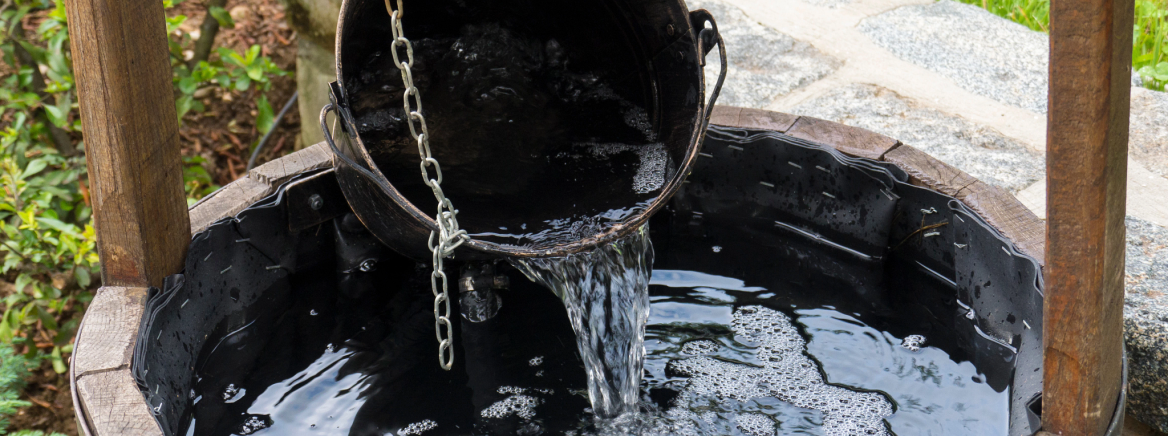Well Chlorination

Well chlorination is the practice of using chlorine in a well to kill potentially harmful microorganisms. Water from a new well, a repaired well, or any well where the sanitary seal is removed should be considered contaminated. The bacteria that contaminate the water are common in the soil and on most surfaces, and may enter the well during construction or maintenance. Therefore, complete and proper disinfection of the well and water system is an important step following the construction, repair, and maintenance of any well. When bacteriological water sample analysis indicates the presence of coliform bacteria, proper disinfection is one step to take to eliminate the contamination in a well. Proper chlorination is also used when analysis indicates the presence of nuisance bacteria.
Always use proper safety precautions when working with chlorine. Common precautions may include proper ventilation, eye protection, respiratory mask, long sleeves, heavy work clothing and gloves. Other precautions may also be required.
A typical chlorination procedure is described below. If your well has water treatment equipment device(s), it is recommended that you contact the manufacturer of the unit or your well driller for information regarding any effect chlorination may have on the system. You may contract with someone to disinfect the well. This should be either a registered well driller or another professional who is knowledgeable of private well components, including filtration equipment. Further, complete well information, i.e. depth, well diameter, and static water level will be needed to determine exact chlorine requirements for proper chlorine concentrations.
-
Remove the vent cap from the well seal and insert a clean funnel into the opening.
-
Add the correct amount of chlorine to a clean bucket that has been partially filled with water. Add the chlorine to the water NOT the water to the chlorine.
-
Pour the chlorine solution into the well through the funnel and let it settle into the well for three hours.
-
Attach a hose to the faucet at the well head. Turn on the water and recirculate through the hose and into the well for 30 minutes being sure to thoroughly wash the inside walls of the casing.
-
Turn off the water and remove the hose from the vent. Reinstall the vent.
-
Go to the outside faucet that is the furthermost from the well. Open the faucet and run the water until chlorine odor is detected. Turn off the faucet. Go to the other outside faucets and run the water until a chlorine odor is detected, then turn off the water.
-
Proceed to all inside plumbing fixtures. Run the water until chlorine odor is detected, and then turn off the faucet.
-
Allow the chlorinated water to stand in the well and the water system for a minimum of 24 hours.
-
After 24 hours, the treated water may be run off through an outside faucet until the chlorine odor is no longer present. To prevent pump damage, monitor the rate of the runoff. After the chlorine is no longer present outside, the inside faucets may be run off. Heavily chlorinated water must not be discharged into the septic system or over the drainfield area.
-
It is recommended that a chlorine test kit be used to determine that all of the chlorine has been discharged from the well and plumbing fixtures.
Special provisions should be made for wells that are artesian or have other features. These features may prevent proper dispersal of chlorine throughout the well and subsequent treatment.

